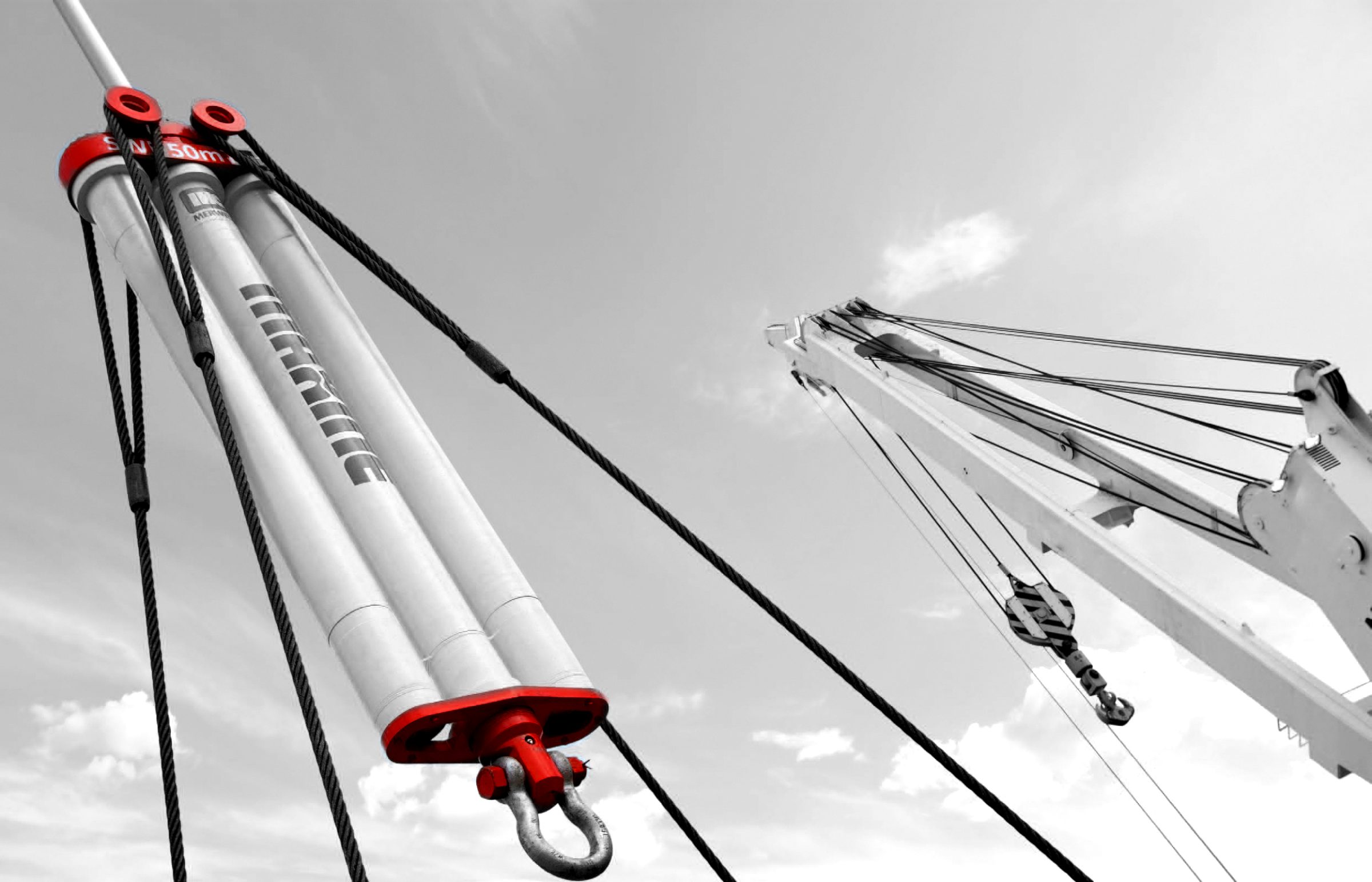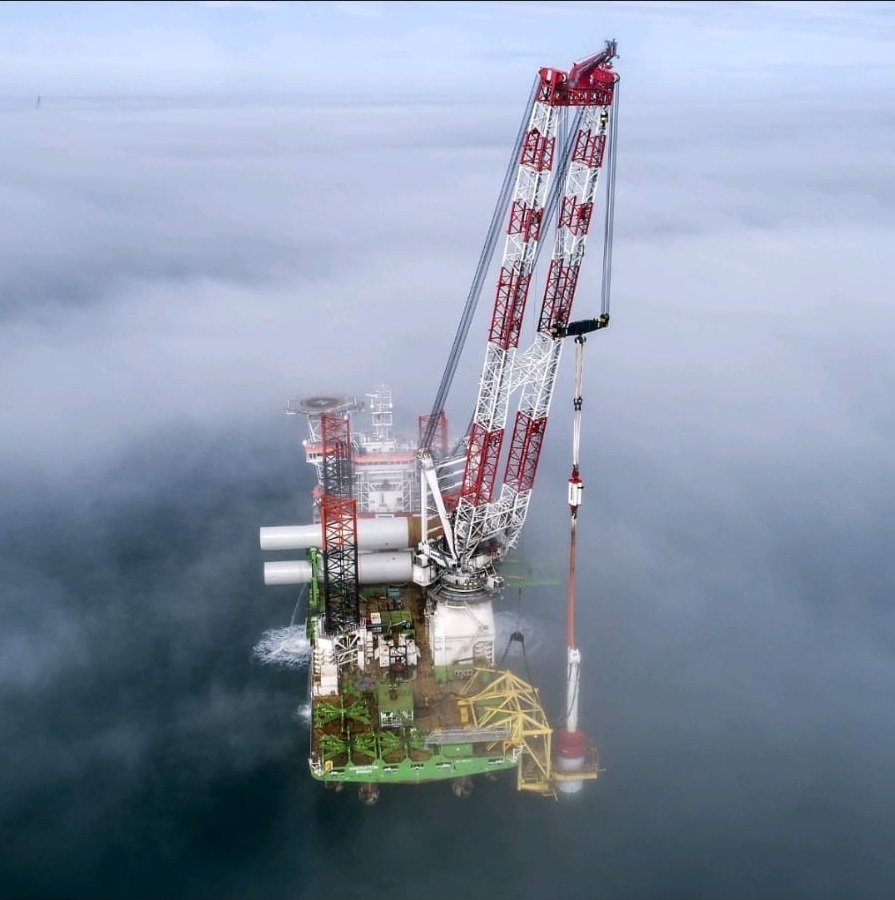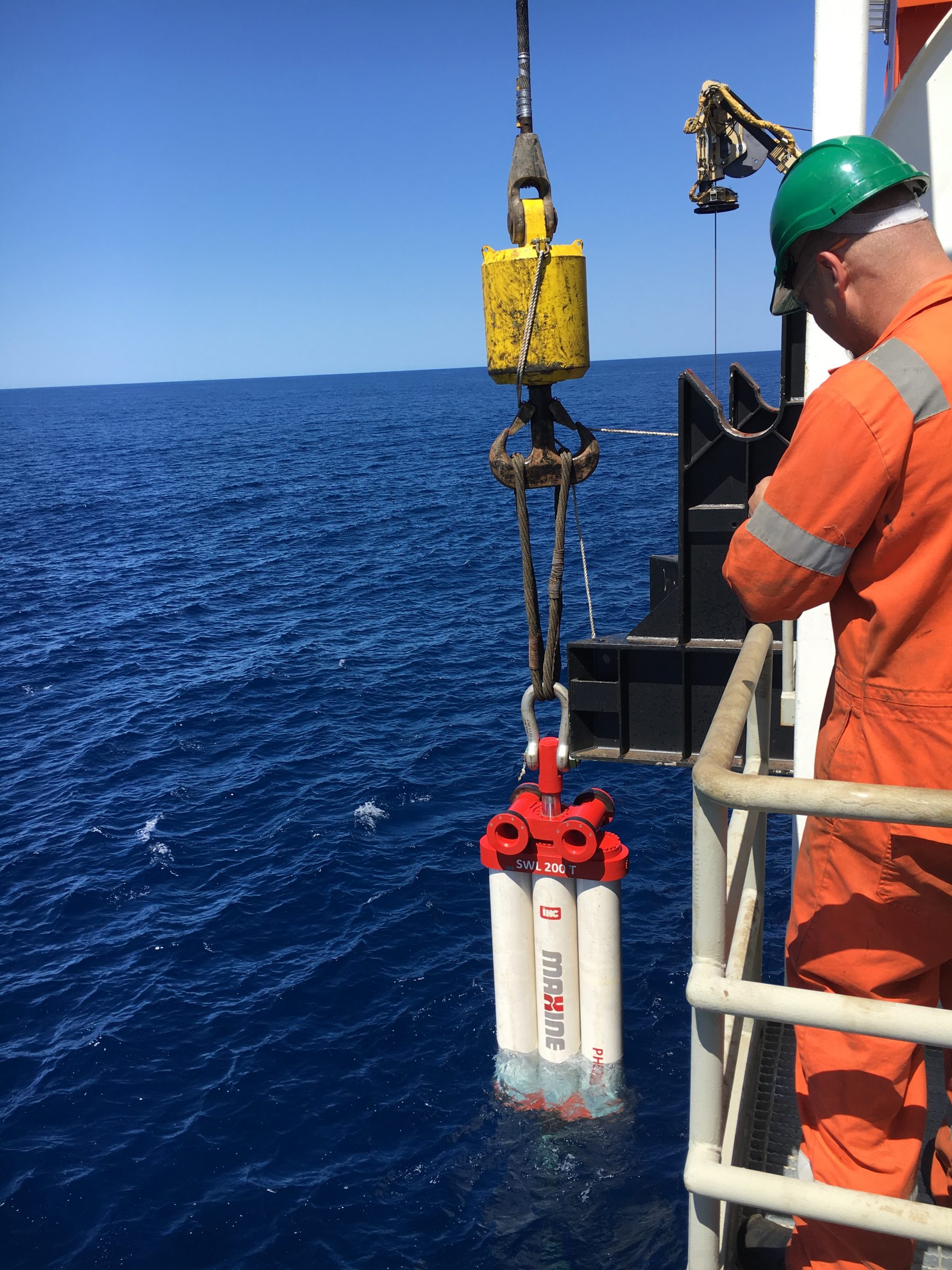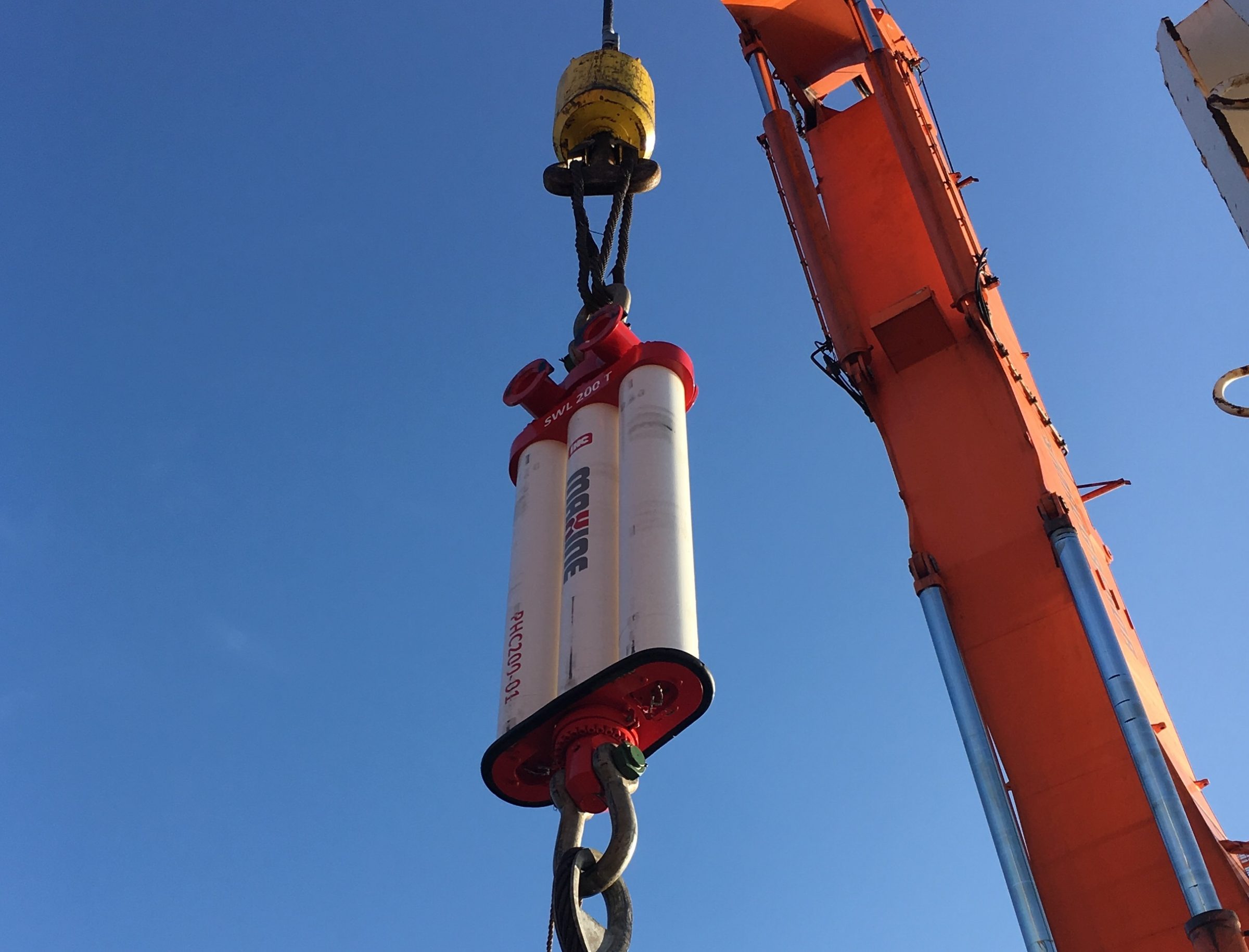Before getting something done in offshore applications, always check the weather forecast first. The oscillating movements generated by waves, can make it difficult to keep a load motionless with regard to the seabed or another vessel. To increase that window of opportunity Vremac, part of the Vydraulics Group, has developed The Maxine, a passive heave compensator to reduce peak forces and fluctuations during lifting and lowering operations.

Vremac is specialized in the production of cylinders, accumulators and swivels for more than 60 years. The last decades the focus shifted to more custom-built cylinders. Sales manager Alfred Wittendorp: “Our job is to make the hydraulic movements of our customers possible. To understand the specific technological requirements of a project and translating that into proven solutions, takes a lot of knowhow and experience. Just the kind of skills that are also required in heave compensation.”
A graduation project got the ball rolling. “We knew this was a product that would suit us to a tee. It was a matter of getting the design right. That takes time, effort. A student made the necessary calculation to see what was technically needed in close cooperation with our team. Our way of introducing state of the art technology to the next generation.”
“The Maxine functions as a shock absorber that follows the motion of the sea to reduce peaks and troughs.”
Alfred Wittendorp (Vremac)
Shock absorber that follows the motion of the sea
The Maxine consists of several hydraulic cylinders that work together in harmony to keep the cables at tension at all times during the operation while lifting or lowering at sea. “It functions as a shock absorber that follows the motion of the sea to reduce peaks and troughs. This allows work to proceed more safely, efficiently and in a controlled manner”, says Alfred Wittendorp.
The Maxine is positioned between the hook of the crane and the load. It operates as a stand-alone system, eliminating the need for an external power source. “Our design was set out to keep the installation size as compact as possible. That really makes a difference in the offshore market.”
The Maxine is available for renting or sale in dynamic loads varying from 30 up to 550 metric tonnes. “We always keep some systems in stock, so customers can be helped quickly”, adds Alfred Wittendorp.



‘Maximal sine’
The name The Maxine wasn’t just chosen randomly. “It isn’t pronounced like the girl’s name”, explains Wittendorp. “The Maxine stand for ‘maximal sine’. The wave in the logo doesn’t just refer to the waves of the sea, but also to the sine which was used in the equations to get the design right.”
And that they did. Since the introduction in 2016, The Maxine has proven herself to be very popular. The passive heave compensator that Vremac developed has been used all over the world to enable customers to work longer at high sea states, minimize downtime and extend weather windows.
And what happened to the student who assisted in developing The Maxine? “He works at Vremac”, says Wittendorp proudly. “He’s busy working on yet another new development. We are building an online configurator for our customers, so they can easily adapt standard cylinders to custom-made solutions.”







